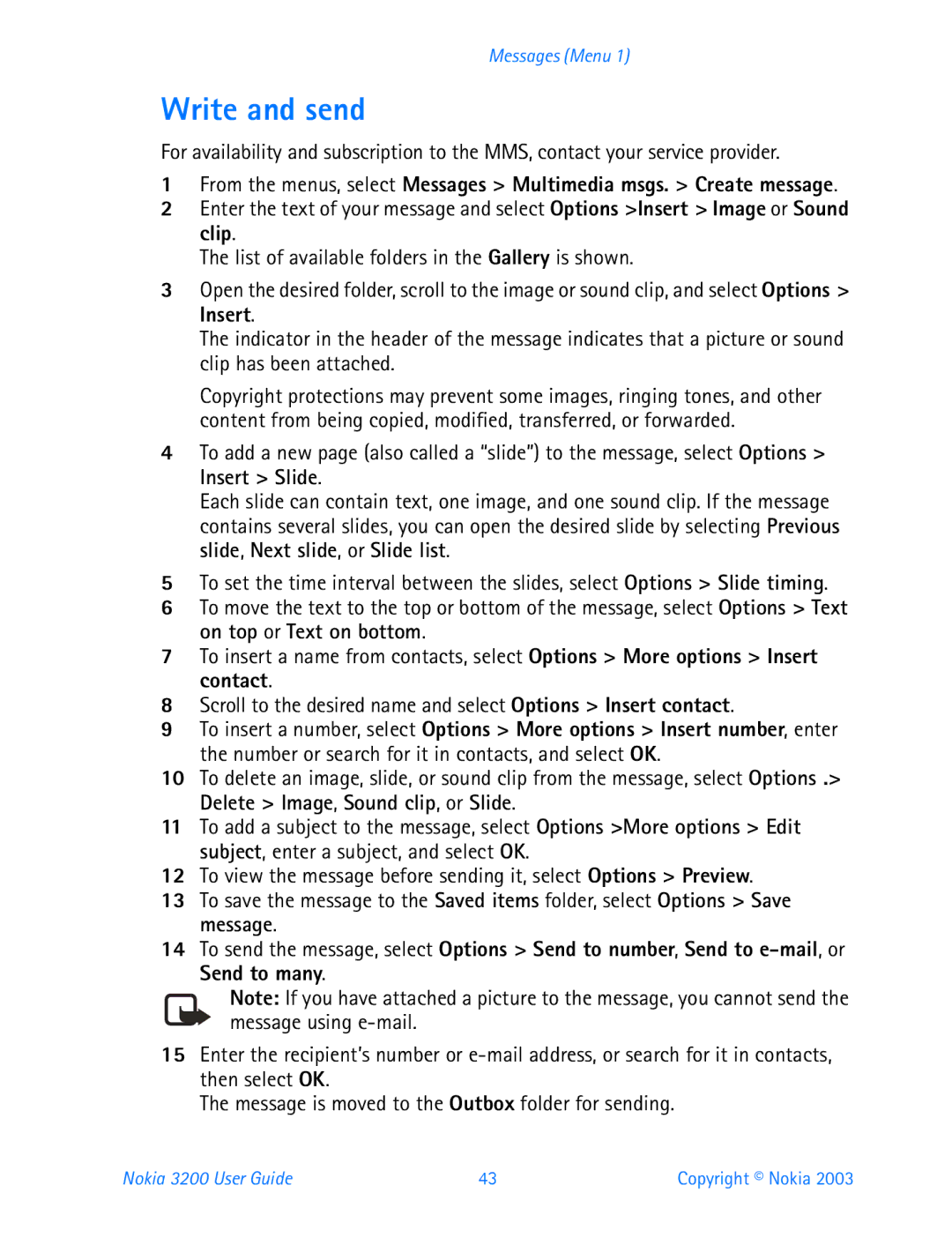3200 specifications
The Nokia 3200, released in 2003, is one of the notable entries in Nokia's lineup of mobile phones, targeting a youthful audience with its unique design and robust features. As one of the first phones to incorporate a camera in a compact format, it played an essential role in the evolution of mobile photography.The Nokia 3200 features a distinctive, colorful design with a removable faceplate that encouraged personalization, a significant trend at the time. Its easy-to-hold shape and relatively lightweight construction make it comfortable for daily use. The phone's display is a 128 x 128 pixel monochrome screen, which may seem minimal by today’s standards, but it was suitable for basic tasks like texting and browsing contacts.
One of the standout features of the Nokia 3200 is its built-in VGA camera. With a resolution of 640 x 480 pixels, users could capture moments on the go, although the image quality was limited compared to modern standards. The camera also allowed for basic editing features, enabling users to add frames and effects to their pictures.
In terms of connectivity, the Nokia 3200 supports GSM networks, making it reliable for voice calls and SMS messages. It does not support 3G or 4G, as these technologies were not yet widespread during its production. However, it featured WAP browsing capabilities, which enabled users to access limited internet services and email, a novel feature at that time.
The Nokia 3200 comes equipped with a range of built-in ringtones and supported downloadable polyphonic ringtones, which appealed to younger users looking to customize their devices. It also has a variety of pre-installed games, adding entertainment value for users beyond communication.
Battery life for the Nokia 3200 is commendable, offering up to 4.5 hours of talk time and over 300 hours on standby, ensuring that it could keep users connected throughout the day.
The phone’s memory is expandable via a Pop-Port connector, allowing users to enhance their storage capacity for images and contacts. Overall, the Nokia 3200 embodies the simple yet effective technology of the early 2000s, catering to a generation eager to embrace mobile communication and personalization in a new and innovative way. Its impact is a reminder of how far mobile technology has come and its lasting influence on the design philosophy in modern smartphones.
